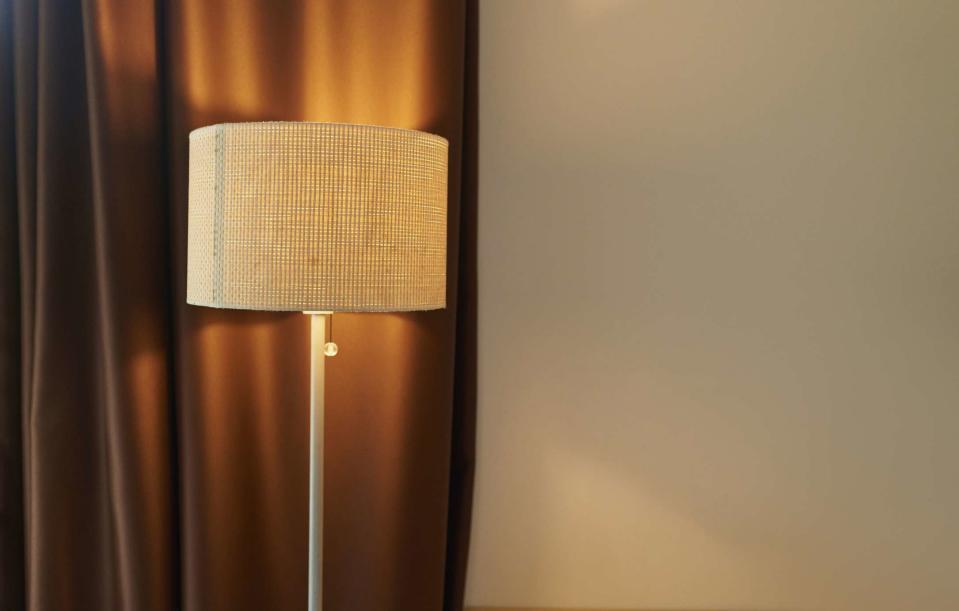Why Is My Light Flickering?
Find out why the lights are flickering and what you can do about it

aire images / Getty Images
Flickering lights can be an indication of a serious problem with the home wiring. In some cases, the issue is as simple to fix as replacing the light bulb, though if you find that the problem is due to loose wiring, a faulty light switch, or fluctuating voltage, then it's best to contact a professional electrician to resolve the issue.
Learn how to troubleshoot and fix this problem so you have an answer the next time you wonder why is my light flickering?
Safety Considerations
Electrical systems are complicated and dangerous. If you are not completely comfortable working on the electrical systems of the home, then it's recommended to contact a trained professional to handle this job. However, if you decide to tackle the troubleshooting and minor repairs, then make sure to wear appropriate personal protective equipment.
When you are working on an electrical system, personal protective equipment should consist of safety glasses, electrical insulated safety gloves, closed-toe shoes, long pants, and a long sleeve shirt. Also, it's a good idea to have a second person with you while you are working, so that if accidental electrocution or another emergency occurs, there is someone to help you.
Defective Light Bulb
Generally, when you are troubleshooting a problem, you need to start ruling out potential cause beginning with the easiest to check and repair. If only one light in the home is flickering, then the issue may just be that the light bulb needs to be tightened, replaced with a new bulb, or that the type of bulb is not compatible with the type of light.
For instance, if the light fixtures is controlled with a dimmer switch, then you may find that fluorescent, CFL, and LED bulbs tend to have problems, like flickering. To resolve this issue, simply switch to a compatible light bulb.
Overloaded Circuits
If you replace the light bulb with a new bulb that is compatible with the light fixture but the flickering continues, then there is likely a different problem, like overloaded circuits. Appliances like the dryer, clothes washer, air conditioner, and oven require a substantial amount of power to operate. When you are simultaneously using multiple major appliances, it can pull more electrical current than the circuits are able to handle. Check to see if the light seems to flicker, blink, or dim when you are running these appliances to verify if this is the cause.
Overloaded circuits indicate that the current electrical system cannot keep up with the demands of the household. You can try to reduce flickering by cutting back on major appliance usage, but this isn't a long term solution. Contact an electrician to inspect your electrical system and upgrade your panel according to the actual power demand of your home.
Faulty Switches
Another issue that could be causing the light to flicker is if there is a problem with the connection between the light switch and the light fixture. With the light on, try wiggling the light switch to see if the light flickers or dims. You can also try to test the light switch by turning it on and off to check if the light stops flickering. If these simple tests shows signs that the flickering is related to a loose, improperly wired, or faulty light switch, then you should consider replacing the switch.
Replacing a light switch isn't a task for beginner DIYers with little electrical experience, so unless you have worked on electrical systems before, it's recommended to contact an electrician to replace the light switch and check the connection between the switch and the light fixture.
Loose or Outdated Wiring
The problem may not be due to a faulty or improperly wired light switch. Instead, the wiring in a single location or throughout the home could be loose or outdated. Try to pinpoint the location that is having problems by keeping an eye out for electrical malfunctions, like flickering lights, dimming, or inconsistent power to appliances.
Loose wiring is a big problem that can cause short circuits, electrical malfunctions, and it can increase the risk of electrical fires. Old or outdated wiring, circuit breakers, and connectors can lead to similar problems. Consider hiring a professional plumber to upgrade your electrical infrastructure.
Voltage Fluctuations
Ideally, the voltage of the home electrical system should always fall between 115 to 125 volts. If the voltage is fluctuating, then it could cause the lights to flicker, dim, or burn out much more frequently than expected. Similarly, you may experience consistent light flickering when running a major appliance. This can be a sign that the electrical system is overloaded, but if the flickering continues after you stop running the appliances, then the issue is likely due to a voltage fluctuation.
You can check the home's voltage with a voltmeter. If the voltage measures above 125, then this is probably the source of the issue. Contact a professional electrician to inspect the electrical system and come up with the best solution to the problem. In rare cases, the problem is caused by the electrical utility. If your neighbors are experiencing similar issues, then contact the local utility to resolve the problem.
Read Next:Why Is My Light Fixture Buzzing?

